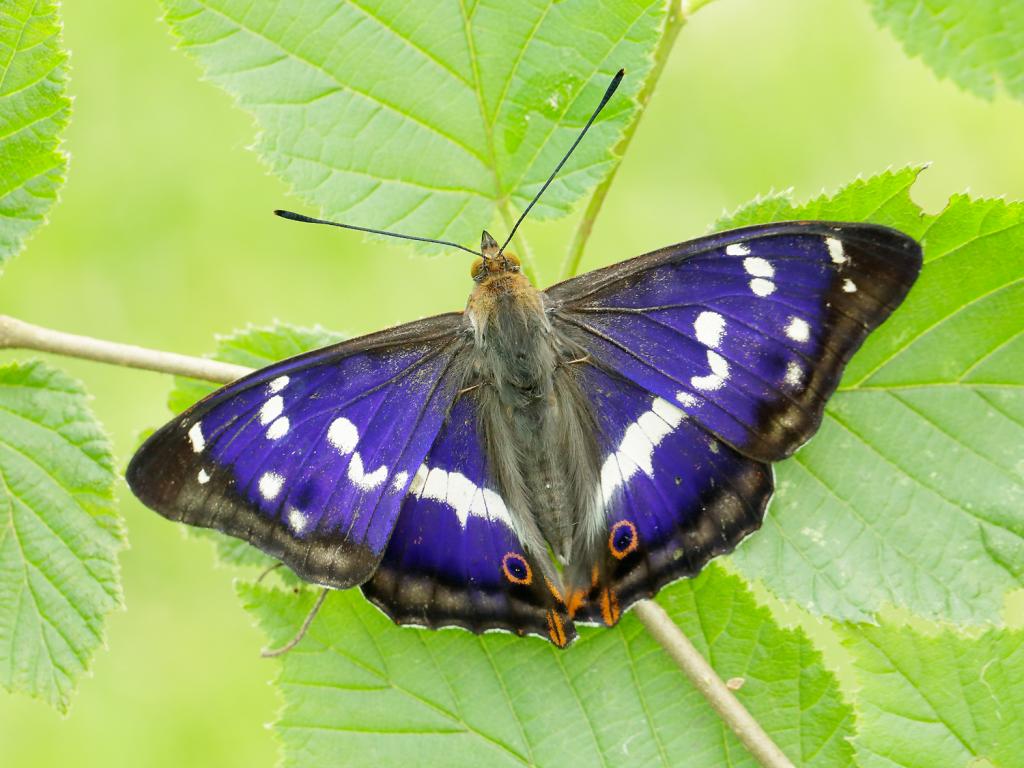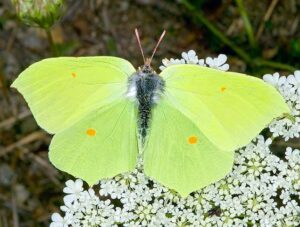Size and Family
- Family: Nymphalids
- Size: Large
- Wing Span Range (male to female): 75-84mm
Conservation Status
- Butterfly Conservation priority: Medium
- European Status: Not threatened
- Protected under Schedule 5 of the 1981 Wildlife and Countryside Act (for sale only)
Caterpillar Foodplants
Goat Willow (Salix caprea) is the most widely used foodplant although it breeds on Grey Willow (S.cinerea) and more rarely Crack- Willow (S. fragilis). Eggs are laid on a wide range of tree sizes, ranging from medium sized shrubs to tall canopy trees.
Habitat
Found in large blocks of broadleaved woodland or clusters of smaller woods and/or dense scrub with a good supply of willow.
This magnificent butterfly flies high in the tree-tops of well-wooded landscapes in central-southern England where it feeds on aphid honeydew and tree sap. The adults are extremely elusive and occur at low densities over large areas. The males occasionally descend to the ground, usually in mid-morning, where they probe for salts either from road surfaces or from animal dung.
The Purple Emperor declined steadily during the twentieth century and is now restricted to some of the larger woods in southern England. There has been a recent slight re-expansion in some areas.Restricted to large woods in southern England where they spend much of their time in the treetops. Females resemble the White Admiral, but have an orange-ringed eyespot under the forewing.
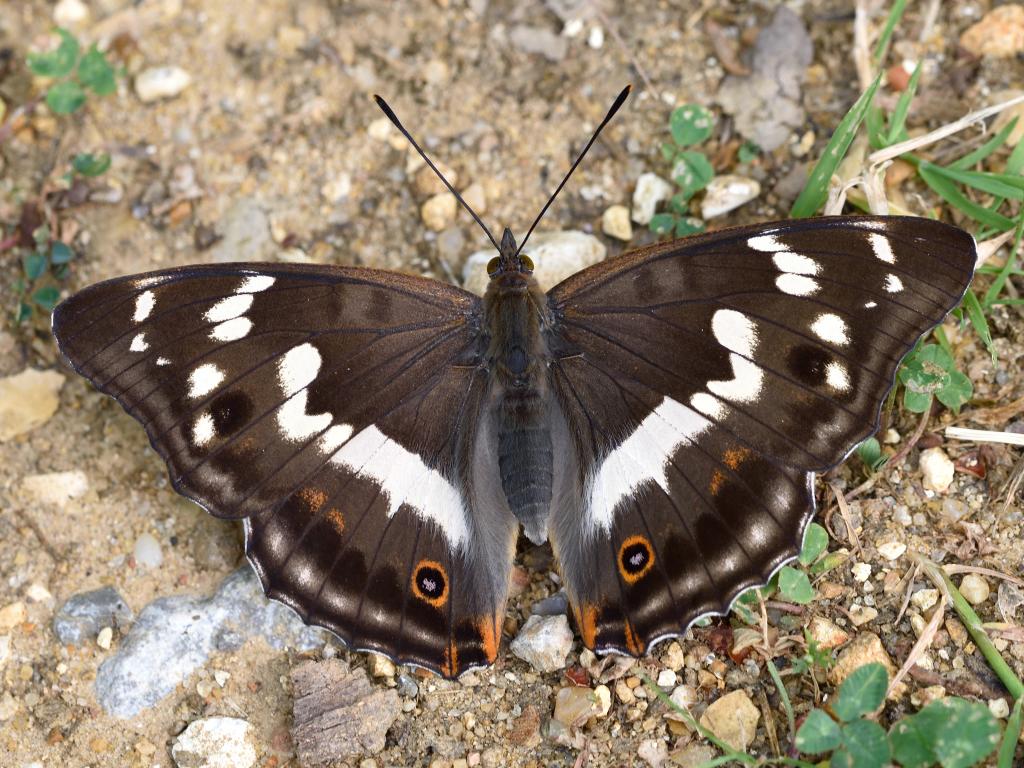
The Purple Emperor butterfly (Apatura iris) is a fascinating and elusive species with distinct characteristics and behaviors. Here are detailed insights into its habitat, diet, and characteristics:
Habitat
Purple Emperor butterflies are primarily found in large expanses of deciduous woodland, particularly those containing oak trees. They are most commonly seen in central and southern England, but their range extends across Europe to parts of Asia. They prefer mature, dense oak woodlands and are often found high in the tree canopy, descending only occasionally to feed or lay eggs.
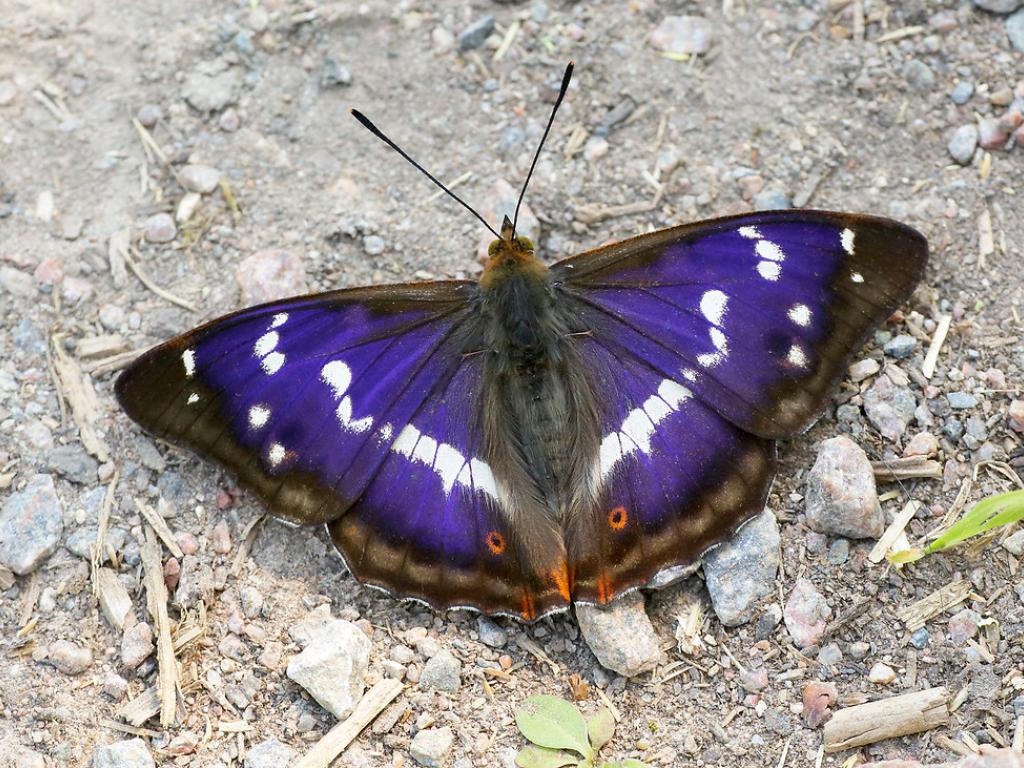
Life Cycle
There is a single generation each year. The adult butterfly emerges in early July, sometimes at the end of June in good years, with a peak in the second and third weeks of July.
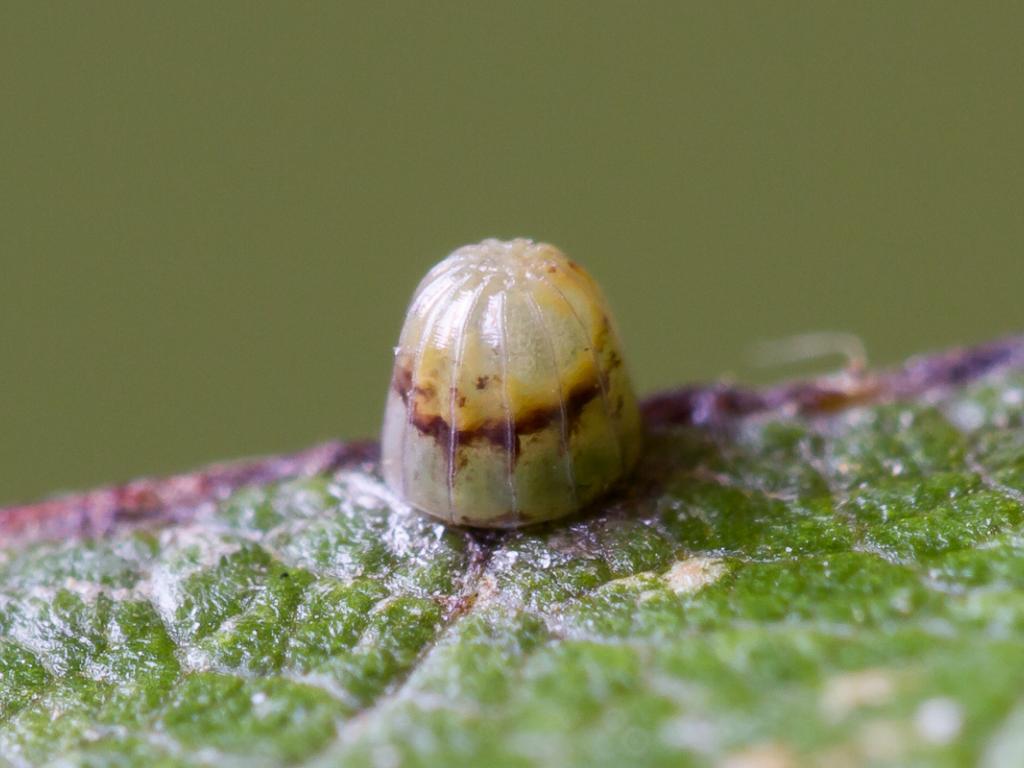
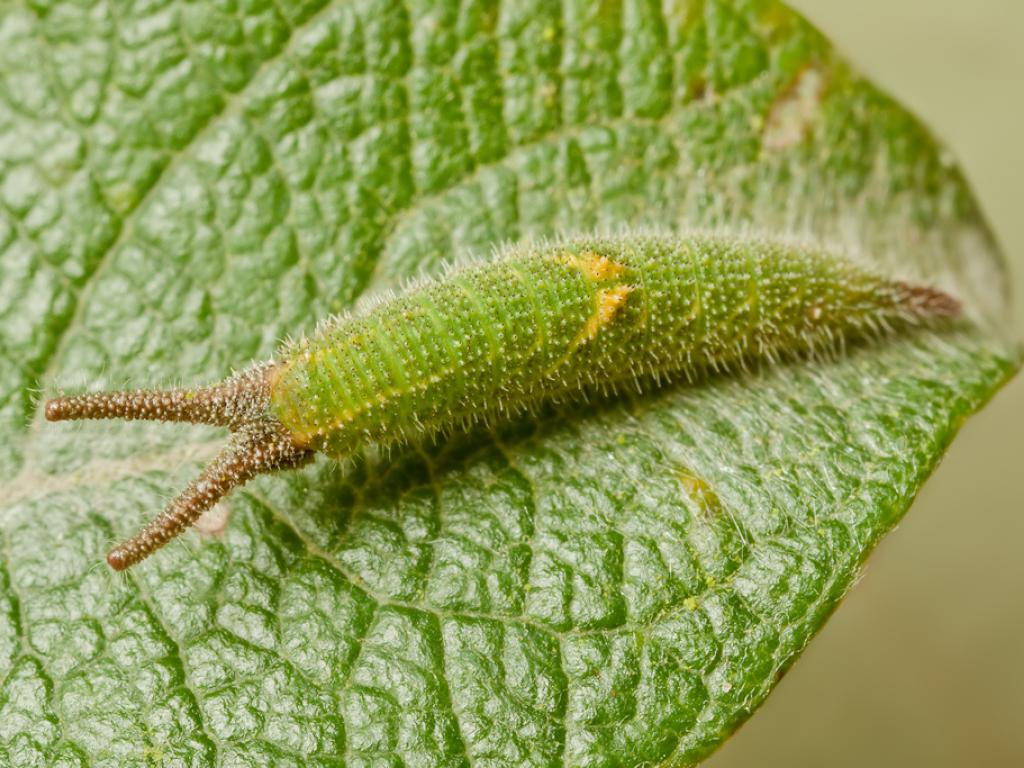
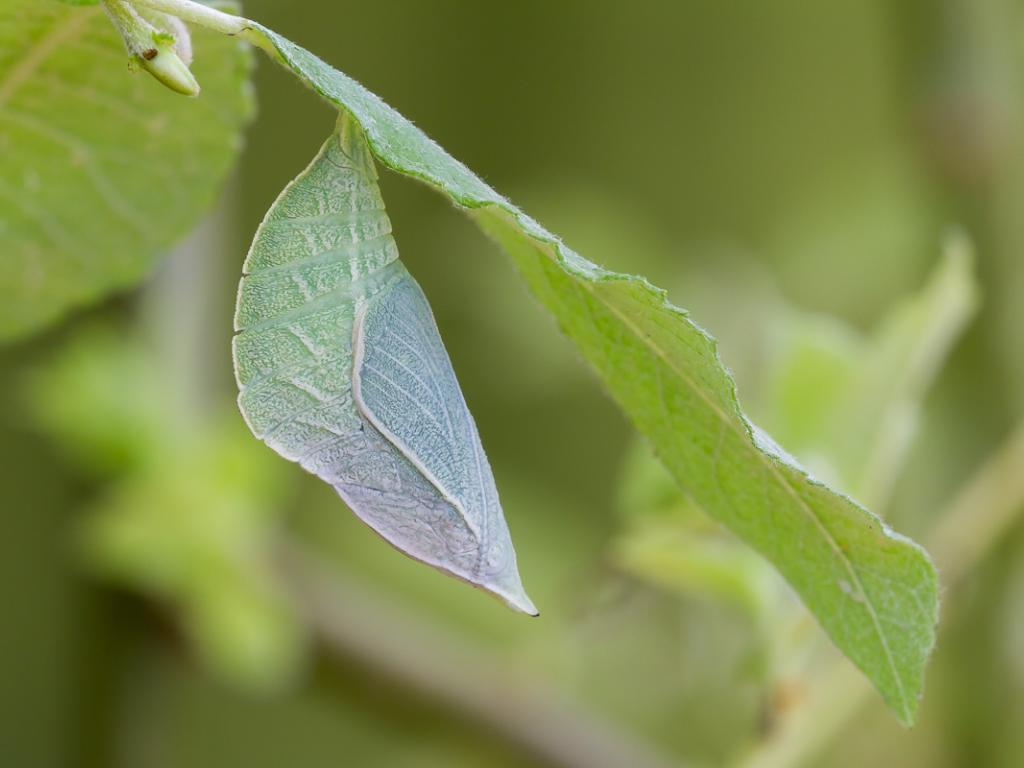
Diet
The diet of the Purple Emperor butterfly is quite unique compared to other butterflies:
- Caterpillars: They primarily feed on the leaves of goat willow (Salix caprea) and other willow species.
- Adults: Unlike many butterflies that feed on nectar, adult Purple Emperors feed on aphid honeydew, tree sap, and various sources of salts and minerals. They are known to come to the ground to feed on animal dung, carrion, and even human sweat, which provide essential nutrients not found in their usual diet.
Characteristics
Physical Appearance
- Males: Males are known for their stunning iridescent purple sheen on their wings, which is visible only from certain angles due to light refraction. They have black wings with white bands and spots.
- Females: Females are larger than males, with a wingspan of up to 92 mm. They have a deep brown coloration and lack the purple sheen. They also have an orange-ringed eyespot on their hindwings.
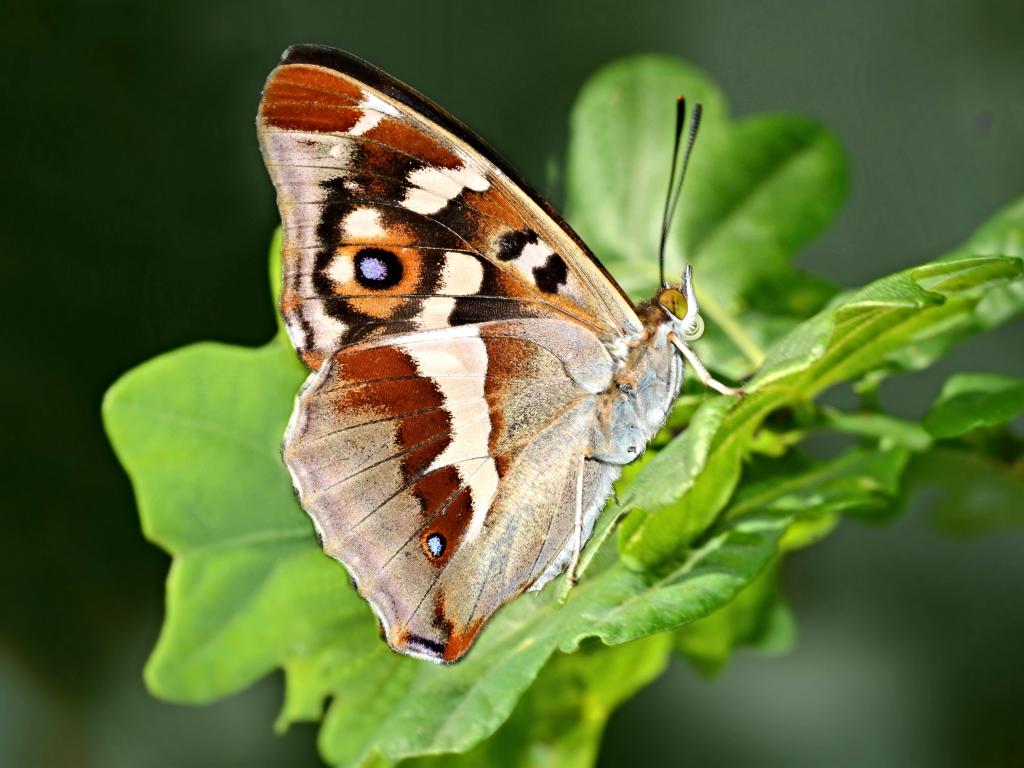
Behavior
- Flight and Activity: Purple Emperors are strong fliers and spend most of their time in the tree canopy. Males are territorial and often engage in aerial battles to defend their space. They are most active during the summer months, from June to August.
- Reproduction: Females lay their eggs on the upper sides of willow leaves. The caterpillars hatch and feed on these leaves, going through several molts before pupating. The pupae are well-camouflaged to resemble leaves.
Conservation Status
The Purple Emperor butterfly has experienced a decline in numbers due to habitat loss and changes in woodland management. However, conservation efforts are ongoing to protect and restore their habitats, particularly in southern England where they are most commonly found.In summary, the Purple Emperor butterfly is a remarkable species with distinctive feeding habits and a preference for mature oak woodlands. Its iridescent purple wings and elusive nature make it a highly sought-after sight for butterfly enthusiasts.
What are the best locations to spot a Purple Emperor butterfly in the wild
Based on the search results, here are some of the best locations to spot a Purple Emperor butterfly in the wild:
- Knepp Castle Estate, West Sussex: Described as “the best site in the country” for Purple Emperors by expert Matthew Oates. The estate offers “butterfly safaris” guided by Oates.
- Fermyn Woods, Northamptonshire: A known site where Purple Emperors can be seen, especially in early morning.
- Alice Holt Forest, Hampshire: Specifically the area known as Abbotts Wood Inclosure, which has had good sightings over the last twenty years.
- Southwater Woods, West Sussex: In 2015, an amazing 126 individuals were counted in a single day here, making it one of the best sites in the UK.
- Eartham Wood to Bignor Hill, West Sussex.
- Houghton Forest, West Sussex.
- West Grinstead Downs Link, West Sussex.
- Morgrove Coppice in the Heart of England Forest: Described as the best place for members of the public to see Purple Emperors in this forest.
- Large deciduous woodlands in central-southern England, particularly those with oak trees.
When looking for Purple Emperors, keep in mind:
- The peak flight season is typically from mid-June to early August, with July being the prime month.
- Early morning (around 8:30 AM) is often the best time to spot them.
- They spend most of their time high in the tree canopy, especially around oak trees.
- Males sometimes descend to the ground to feed on minerals from damp earth, animal droppings, or even carrion.
Remember to respect the environment and follow any guidelines provided by nature reserves or wildlife organizations when butterfly watching.
PURPLE EMPEROR(Apatura iris)
Despite its exotic appearance, the purple emperor is as typical of UK woodland as the mighty oak. It’s elusive and beautiful, but has quite the unsavoury appetite.
What do purple emperor butterflies look like?
Caterpillars: bright green with yellow spots and diagonal yellow lines along sides. They also have prominent, horn-like protrusions on their heads.
Adults: large and dark with white banded wings. Males have an iridescent purple sheen to their upper wings, while females are brown. It is the second largest butterfly in the UK (only the swallowtail is larger). Males are the size of a small bird.
What do purple emperor butterflies eat?
Caterpillars: goat willow is the preferred food plant. Caterpillars are active at night.
Adults: aphid honeydew and tree sap are the main food source, though they also come to ground to feed on animal dung and carrion for salts and minerals.
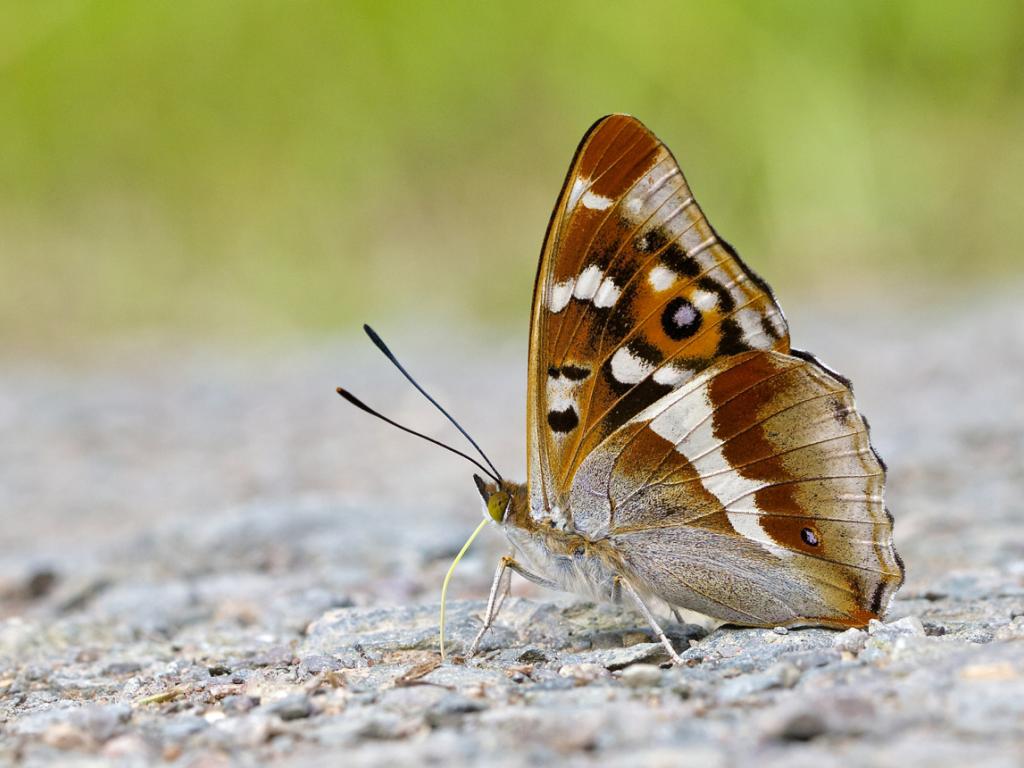
How do purple emperor butterflies breed?
During July, males congregate on particularly tall ‘master trees’ awaiting mates. The same trees can be used year after year. Females either couple up with a male or swoop to the ground as a signal that they have already mated.
Eggs are laid on goat willow or grey willow leaves. Hatched larvae are well camouflaged with the midrib of the leaves. The caterpillars overwinter in forks in willow twigs then pupate in the summer.
The Purple Emperor is a magnificent and elusive insect that is actively sought out by the many subjects of “His Majesty”, as the male butterfly is affectionately known. This butterfly spends most of its time in the woodland canopy where it feeds on aphid honeydew, with the occasional close encounter when it comes down to feed on sap runs or, in the case of the male, animal droppings, carrion or moist ground that provide much-needed salts and minerals. Those that make pilgrimages to see this spectacular creature will often try and lure the males down from the canopy using all manner of temptations – including banana skins and shrimp paste.
The male butterfly is one of the most beautiful of all of the butterflies found in the British Isles. From certain angles it appears to have black wings intersected with white bands. However, when the wings are at a certain angle to the sun, the most beautiful purple sheen is displayed, a result of light being refracted from the structures of the wing scales. The female, on the other hand, is a deep brown and does not possess the purple sheen found in the male.
How can I attract Purple Emperor butterflies to my garden
Attracting Purple Emperor butterflies to your garden can be challenging, as they have unique habitat requirements and feeding preferences. However, here are some steps you can take to increase your chances:
- Plant the right trees:
- Create the right habitat:
- Provide alternative food sources:
Unlike most butterflies, Purple Emperors rarely feed on flower nectar. Instead, consider offering: - Avoid pesticides:
- Be patient and observant:
- Consider the broader ecosystem:
Remember that attracting Purple Emperors to a garden can be very difficult, as they are primarily woodland creatures with specific habitat needs. Your best chance of success is if you have a large property with mature oak trees and willow thickets nearby. Even then, sightings may be rare. Conservation efforts focusing on preserving and expanding their natural woodland habitats are generally more effective for supporting Purple Emperor populations.

